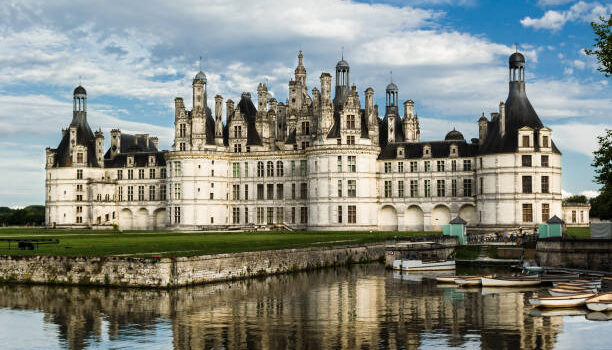Private van / sedan transfer on demand from Charles de Gaulle airport to Loire Valley
Fortress of the Loire Valley: An Excursion through French History
These palaces, generally constructed or redesigned during the French Renaissance (fifteenth sixteenth hundreds of years), are settled along the riverbanks and their feeders. Following back to middle age roots, they typify critical design angles. The Loire Valley, home to these striking landmarks, is an UNESCO World Legacy Site.
Amboise Fortress
Previous home of Charles VIII, who met his awful end here matured 28 of every 1498. Francis I welcomed Leonardo da Vinci, who likewise passed on here in 1519. Remarkably, the palace was engaged with the scheme of Amboise proclaiming strict conflicts.
Azay-le-Rideau Fortress
This notable stronghold, charged by Francis I, is broadly depicted by Balzac as “a faceted precious stone set in the Indre.”
Blois Fortress
This archaic fortress was the fundamental home of Ruler Louis XII, and later Francis I. It was the focal seat of replacements François II and Charles IX. In the wake of being deserted and reestablished, it currently includes three wings in Gothic, Renaissance, and Ornate styles.
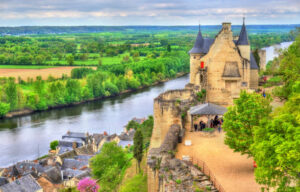 Chambord Fortress
Chambord Fortress
At first a hunting lodge in 1519, the palace later went through remodels under Louis XIV. It served different jobs ever, including a field emergency clinic during the Franco-German antagonism in 1870.
Châteaudun Fortress
Eminent for its high keep, Sainte-Chapelle, and the Dunois and Longueville wings.
Cheverny Fortress
This palace, portrayed in Tintin comics as Marlinspike, has a brilliant proprietorship history, including Ruler Henri II, Diane de Poitiers, and the Marquis de Vibraye.
Chaumont Fortress
Worked to safeguard against the counts of Anjou, it was recreated in a renaissance style after Louis XI’s discipline for Pierre d’Amboise’s resistance to the Crown.
Chenonceau Fortress
Ensnared in monetary misrepresentation, proprietorship questions, and wartime jobs, it houses rooms that recount the narratives of Catherine de Medici and her little girls.
Chinon Fortress
Developed over more established Roman walls, this palace has facilitated verifiable figures like Henry II of Britain, Richard the Lion Heart, and Joan of Curve.
Langeais Fortress
The most seasoned enduring stone structure in France, Langeais Palace, has seen a few times of obliteration and remodel.
Loches Fortress
The name Loches, got from the old Castrum Locae signifying “swamp camp”, was a focal point for the English Plantagenet progenitors.
Valençay Fortress
Authorized by Napoleon Bonaparte to have unfamiliar dignitaries, it houses works from the Louver exhibition, including the Venus de Milo and Winged Triumph.
Villandry Fortress
The last extraordinary palace of the Loire to be worked during the Renaissance, it saw the ceasefire between Henry II Plantagenet and Philippe Auguste.
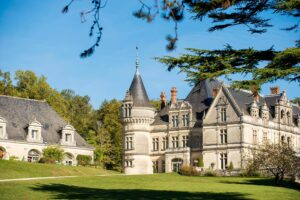 Remain at Château de la Bourdaisière
Remain at Château de la Bourdaisière
The Château de la Bourdaisière, a memorable landmark, stands where a fourteenth century fort once safeguarded Visits against English intrusions. It was bought in 1482 by Louis de La Mézière, the then City chairman of Visits, and changed into a ranch style home somewhere in the range of 1518 and 1522 by Philibert Babou. As the centuries progressed, every main beneficiary has formed the domain through different remodels. The late eighteenth century saw the halfway annihilation of the palace under the Duke of Choiseul’s requests, with just the archaic keep and Babou house remaining. New developments were subsequently added by ensuing proprietors.
The Château de la Bourdaisière, found southeast of Montlouis-sur-Loire in Indre-et-Loire, flaunts a 55 hectare encased park. It is home to old trees like cedars, redwoods, chestnuts, and oaks, and grandstands a large number of vegetables and fragrant plants, including 800 tomato assortments. The “Dahliacolor” contemporary nursery, highlighting 200 and ten assortments of dahlias, is arranged behind the Tomato Studio vegetable nursery. An instructive walkway advances attention to contemporary ecological and cultural issues.
La Bourdaisière likewise works as a beguiling inn, complete with 25 rooms, a family food eatery, an outside pool, tennis court, running way, and forest strolls.
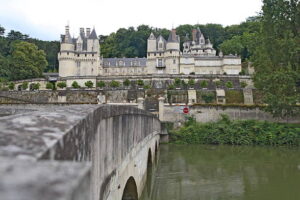 Find the Château d’Ussé
Find the Château d’Ussé
Roosted on the slopes of Indre and Loire, the Château d’Ussé offers an entrancing vacationer experience, suggestive of the fantasy “Resting Magnificence”.
Perceived as a verifiable landmark in 1931 and 1951, the Château d’Ussé is substantially more than its Medieval times tower, Renaissance veneer, and exemplary structure style. Inside its walls, all year presentations highlight embroideries, Chinese porcelain, and oriental weaponry.
A Remarkable 600 Hectare Park
The Château d’Ussé is home to 600 hectares of parkland, a show-stopper of Le Nôtre, a similar modeler who planned the Versailles Gardens. The flawlessly organized orange forests and extremely old trees, alongside its patio, add a fantasy mood to the palace. Perceived for its excellence, the Château d’Ussé is likewise essential for UNESCO’s Reality Legacy Rundown.
Beginning around 1975, the Château d’Ussé has been a well known vacationer site, drawing in excess of 100,000 guests every year from around the globe. Found 15 km from Chinon and 42 km from Visits, it invites stroll in guests.
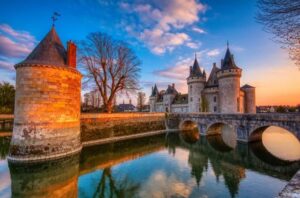 Distance between the of the Loire valley and Paris air terminals
Distance between the of the Loire valley and Paris air terminals
The fortress are arranged at extensive good ways from one another, with the typical separation from Paris air terminals going from 140 to 400 km. This compares to a driving season of roughly 1 to 5 hours, contingent upon the particular palace. While arranging your excursion to Charles de Gaulle (CDG) air terminal from these memorable locales, guarantee to represent this movement time.

